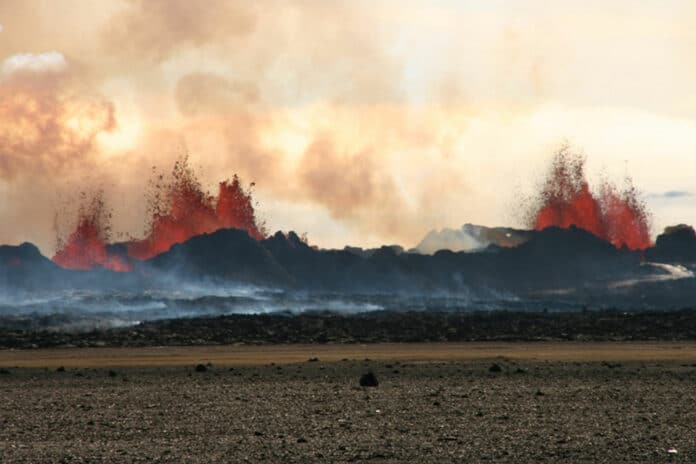According to a recent study led by researchers at Dartmouth College in New Hampshire, the majority of these mass extinctions happened after mega-eruptions that emitted toxic gases and volcanic lava for hundreds of thousands of years, and in some cases for as long as a million years.
The analysis linking massive eruptions, marked by lava and gas gushing from possibly dozens of volcanoes and long fissure vents, to mass extinctions throughout Earth’s history verifies what many geologists have long hypothesized. The Cretaceous-Paleogene (K-Pg) extinction’s most well-known mass extinction was famously tied to a comet or asteroid impact in the Caribbean. Still, geologists have since found that the impact was preceded by a long period of eruptions in India that left behind flood basalts known today as the Deccan Traps.
The long-term eruption would have produced enormous volumes of sulfur dioxide, which would have chilled the Earth and contributed to the vast die-off recorded in the fossil record.
Study co-author Paul Renne, professor-in-residence of Earth and planetary science at the University of California, Berkeley, and director of the Berkeley Geochronology Center, said, “It’s been obvious to me for some time that there is this correlation between mass extinctions and flood basalt episodes. But nobody has approached it in the way that’s done in this work, which is to look at the actual rates at which the eruptions happened, presumably related to the rate at which climate modifying gases are injected into the atmosphere. And from the analysis, it looks like the rates matter, especially for the really big ones.”
“In fact, there seems to be a threshold beyond which you’re going to get a mass extinction and below which you might get some minor climate perturbations, but not something that extinguishes half of all life on the planet.”
“Our results indicate that in all likelihood, there would have been a mass extinction at the Cretaceous-Paleogene boundary of some significant magnitude, regardless of whether there was an impact or not, which can be shown more quantitatively now. The fact that there was an impact undoubtedly made things worse.”
According to the new research, four of the five largest mass extinctions in the last 540 million years—the so-called Phanerozoic Eon—and a few other lesser but planetary-wide extinctions—correlate with massive lava occurrences that gave rise to sizable igneous provinces. The timeline of catastrophic extinctions and known meteor impacts are not correlated.
Scientists noted, “In the study, a “large” igneous province is one containing at least 100,000 cubic kilometers of magma. For context, the 1980 eruption of Mount St. Helens in Washington involved less than one cubic kilometer of magma.”
“Most of the volcanoes represented in the study erupted about a million times more lava than Mount St. Helens did. The Deccan Traps, for example — traps is an Indian word for steps, because of the step-like structure of overlapping lava flows — erupted over 1 million years and spewed lava flows for distances of at least 500 kilometers, in some places nearly 2 kilometers thick.”
The study’s lead author, Theodore Green, an undergraduate at Dartmouth College, said, “The large, step-like areas of igneous rock from these big volcanic eruptions seem to line up in time with mass extinctions and other significant climatic and environmental events.”
The scientists contrasted the geological record’s most accurate estimations of flood basalt eruptions with occurrences of drastic extinction of species. They tested whether the eruptions would line up just as well with a randomly created pattern and performed the experiment 100 million times to demonstrate that the association was not merely coincidental. They determined that the chance that the correlation between eruptions and extinctions was merely random was one in 100.
Brenhin Keller, an assistant professor of earth sciences at Dartmouth and senior author of the paper, said, “While it is difficult to determine if a particular volcanic outburst caused one particular mass extinction, our results make it hard to ignore the role of volcanism in extinction.”
Green said, “Flood basalt eruptions aren’t common in the geologic record. The last one of comparable, but significantly smaller, scale happened about 16 million years ago in the Pacific Northwest, producing what’s known as the Columbia River Basalt Province.”
According to Renne, “the eruptions are accompanied by massive releases of carbon dioxide, which warms the atmosphere, as well as sulfur dioxide, which cools the atmosphere. Recent evidence indicates that the cooling that leads to a mass extinction is often preceded by warming because the CO2 is emitted first because of its lower solubility in magma than in sulfur.”
Journal Reference:
- Theodore Green et al. Continental flood basalts drive Phanerozoic extinctions. PNAS. DOI: 10.1073/pnas.2120441119
